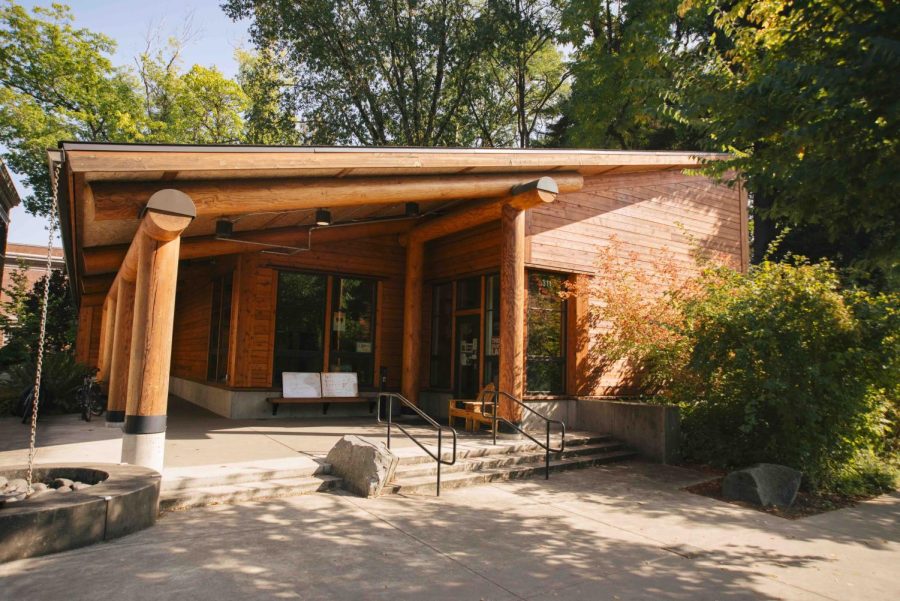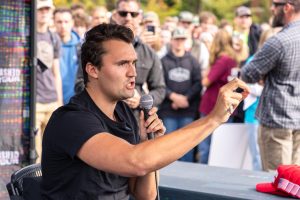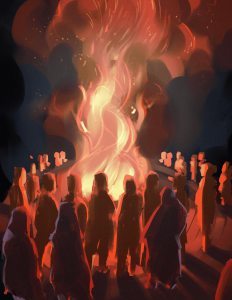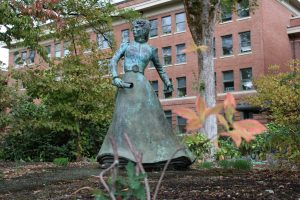Indigenous People’s Day in Corvallis: The power of casual conversation and student advocacy in passing a historic resolution
Outside view of the Ina Haws Center.
November 3, 2022
In 2015, Corvallis and Portland recognized Indigenous People’s Day—two years before Oregon formally designated it as a state holiday to be celebrated on the second Monday of October.
This groundbreaking resolution passed entirely because of the collective efforts of folks at the Ina Haws in partnership with the City of Corvallis.
Corvallis lies on the homelands of the Kalapuya people, made up of several distinct Indigenous tribes who were the first residents of the Willamette Valley. The idea of Indigenous People’s Day was first proposed in 1977 by a delegation of Native Nations to the United Nations.
According to Ina Haws Center Director Luhui Whitebear, center student staff members William Miller and Matt Williams noticed that other cities had been resolving to pass Indigenous People’s Day and wondered why Corvallis had not done it.
“We were like, yeah, why hasn’t Corvallis done that yet?” Whitebear said. “That’s how casual of a conversation it was. They started reaching out to the City of Corvallis about the possibility of getting it recognized here. Those efforts led to Corvallis and Portland being the first two cities in Oregon to recognize Indigenous People’s Day through a city proclamation.”
On Oct. 12, 2015, Corvallis Mayor Biff Traber signed a proclamation at the Native American Longhouse Eena Haws at Oregon State University.
“The City of Corvallis and current day Benton County was historically inhabited by the Kalapuya people,” the proclamation states. “The City of Corvallis recognizes and acknowledges the significant contributions made in our community by Indigenous People and commits to ensure greater access and opportunity for continued contribution.”
“One of the things we like to talk about is to not forget how powerful your words can be,” Whitebear explained.
Being in a community and having conversations about change can lead to bigger things, Whitebear said.
“That partnership has been between the Ina Haws and the City of Corvallis ever since,” Whitebear said. “The Ina Haws has been helping provide the program piece of it, and then Mayor Traber’s team has been drafting the proclamation, going over if it needs to be updated and doing the public signing here on campus during the programming.”
This year marked the second time OSU hosted a national speaker for Indigenous People’s Day—that speaker being Michael Benitez Jr, a scholar and educator in the field of diversity, equity and inclusion in higher education.
“His ancestors were among some of the first that were impacted by the arrival of Europeans, too, in the Carribeans,” Whitebear said. “If we think about Tiano people and Arawak people as that first point of contact with Columbus’ crew, I think that is something we haven’t really touched on as a campus or as a center or city. Oftentimes, folk from those areas are framed as being from the Latinx community, which [they] in many ways are, but also are Indigenous people.”
The Taíno and Arawak are Indigenous peoples of Puerto Rico, Whitebear noted.
“Attend any events and take the time to learn about Indigenous people more broadly, especially the people whose lands folk are studying, living on, or where their hometowns are,” Whitebear said. “Indigenous People’s Day is often considered a counter-holiday to Columbus Day, and that’s very much what it is. It’s that recognition of, why are we celebrating genocide?”
She said it will be interesting to see if the U.S. ever permanently removes Columbus Day from being a national holiday.
Whitebear recommends the Native Land website for folks trying to get an idea of whose land they are on.
“One of the other things I like about it is it shows overlapping territories and movements,” Whitebear said. “A lot of times people think there’s only one people from an area when that’s not always the case. They do have some errors, including the Corvallis area having spelling errors of the Api’nefu people.”






